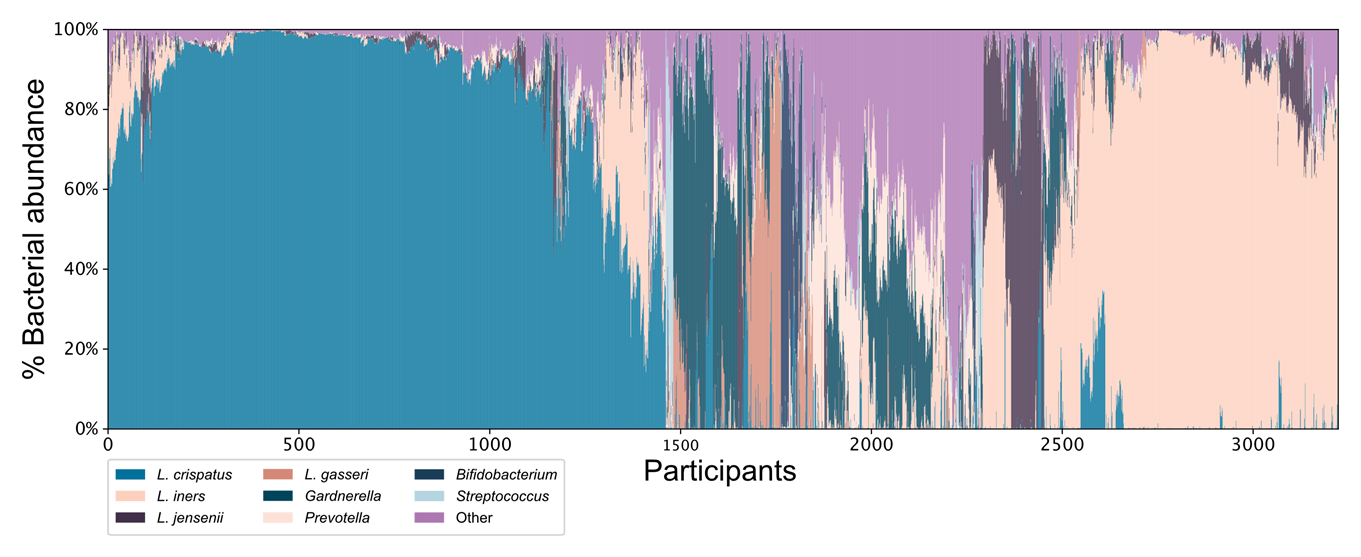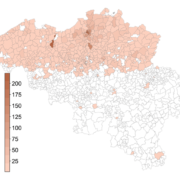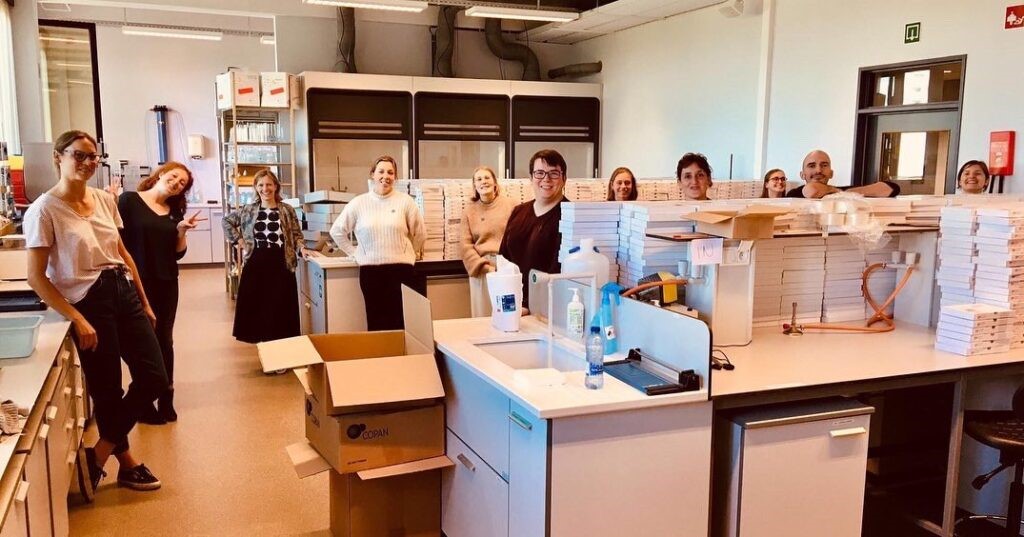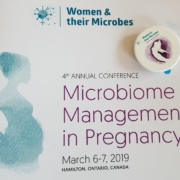Lactobacilli dominate the vagina in Belgian women
By Prof. Sarah Lebeer, Research Professor in Microbiology and Molecular Biology, Department of Bioscience Engineering, University of Antwerp, Belgium
A little over a year ago, I wrote an ISAPP blog post about the setup of our Isala citizen science project on women’s health. Now, I can proudly say that we have the first results. Last year, more than 3300 women sent vaginal samples back to our lab, not only from the big cities but also from the smallest villages all over Flanders, Belgium (Figure 1). While Prof. Jack Ravel and many other colleagues have already done pioneering work in the US (e.g., Ravel et al. PNAS & Valencia study), Estonia and Africa, the vaginal microbiome of healthy women was less well mapped in the region where we live in Western Europe (Flanders, Belgium).

Figure 1: Map of Flanders (Belgium) showing regions from which the Isala participants sent their samples, with a gradient for the number of participants.
Last year, we managed to inspire women from a wide age range to donate two vaginal self-sampled swabs: the youngest participants were 18 years old, while a woman of 98 years old even participated. Each participant of Isala showed a unique vaginal microbiome (Figure 2).

Figure 2. Bar chart showing that each Isala participant had a unique vaginal microbiome composition, but also that lots of parallels could be drawn based on the most dominant bacterium.
Through various analyses, we were able to find parallels between the vaginal profiles of the Isala participants. We decided to divide the women in eight groups based on their most dominant microbe. Lactobacillus crispatus was found in 43% of all Isala women as most dominant bacterium, Lactobacillus iners in 28%, Lactobacillus jensenii in 4%, Lactobacillus gasseri in 3%, Gardnerella vaginalis in 12%, Prevotella in 6%, Bifidobacterium in 2% and Streptococcus in 2% of all Isala participants (Figure 3). Last June 2021, all women received this information, with a nice drawing for each bacterium and some interesting facts about these bacteria, as well as the relative abundance of this top 8. (See here.)

Figure 3. Chart showing the proportion of women participating in the Isala project that have a vaginal microbiota dominated by different bacterial genera or species.
Our work has only just begun. My team (see photo below) is now analyzing all the metadata collected via the detailed questionnaires and associating them with these microbiome profiles. The impact of the menstrual cycle, hormonal fluctuations, diet, smoking, sexual activity and other relevant factors is currently being explored. Hopefully, this will allow us to better understand for the vaginal tract what a ‘healthy microbiome’ really is and what action women can take to obtain or preserve a ‘healthy’ or resilient microbiome. This is challenging to define with our current state of knowledge, but one characteristic of health of the microbiome may be its resilience. At the next annual ISAPP meeting, Karen Scott and I will co-chair a discussion group on ‘What do we really know about the microbiome and health?’. Now, I think it is fair to say that, compared to the gut, associations between specific microbiome members, such as lactobacilli, and health are quite strong for the vaginal tract. These lactobacilli form a protective barrier, are able to keep pathogens out, and prevent overt inflammation, so we could define lactobacilli-dominated vaginal communities as being resilient to many infections and disorders and thus probably ‘healthy’.
However, there is still much we do not know. Can women make certain changes in their lifestyle, diet, anticonception, underwear material etc. to promote lactobacilli such as L. crispatus in their vagina? What are the consequences of normal events in live such as pregnancy and menopause on these lactobacilli? Is a vaginal community with less lactobacilli always less healthy or resilient? On this page, you can get an overview of the different aspects we want to investigate. We hope to submit the first big Isala manuscript by the end of this year and will inform you as soon as possible about the results.










